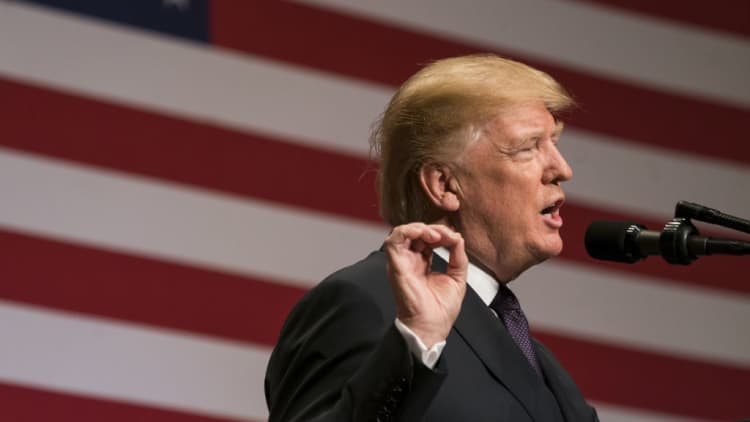
The president who ushered in the nation's last major tax reform, Ronald Reagan, would have supported the current GOP tax bill despite its flaws, said Jim Miller, White House budget director under the 40th president.
"The reductions of marginal tax rates were much greater under Reagan, and the overall effects were very, very large. Of course, the economy is larger now than it was then, but this [Republican bill] is a very important initiative," Miller told CNBC's "Squawk Box" on Friday.
The Republican tax bill that awaits President Donald Trump's signature includes a federal corporate tax rate cut from 35 percent to 21 percent and an overhaul of individual tax brackets.
"It's not a perfect bill. There are lots of problems in the tax package," Miller acknowledged without elaborating, but he insisted "it's major advance forward; it's going to increase economic activity; and it's going to be good for America."
"We will go from a 'normal' 2 percent that we've begun to accept, given what's happened in the last decade, to a normal 3 percent and maybe even 4 [percent]. That is a tremendous difference," he added.
There was a stark difference between the economic times surrounding Reagan's bipartisan 1986 tax reform and Trump's 2017 Republican-only tax overhaul.
In 2017, the economy was running on two-straight quarters of 3 percent growth, against a backdrop of little inflation and three Fed rate hikes to a range of 1.25 percent to 1.50 percent.
By contrast, following the early 1980s with 2.7 percent average economic growth, soaring inflation and double-digit Fed interest rates, 1986 saw 3.5 percent growth, a fed funds rate of around 6 percent with 1.1 percent inflation.
Conservative and liberal economists have long debated whether the deficit increases of the Reagan years were worth it to get greater economic growth.
Those same arguments are raging nowadays about whether GOP tax reform under Trump will bring the kind of economic growth that's worth the risk of increasing the federal budget deficit.
"In this tax package, about two-thirds of the savings are on the corporate or on the business side, one-third on the individual side," Miller said.
But he disputed the assertions of critics that the Republican bill won't give many working Americans a tax cut, while lining of the pockets of the rich and corporations.
"The middle class will not only benefit from the cut that they will receive on their own personal income tax, but from the increased economic activity that will bring up wages, increase demand for labor and bring people who have just given up or out of the workforce back in the workforce," Miller said.


